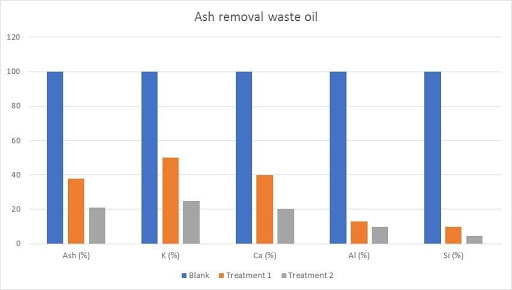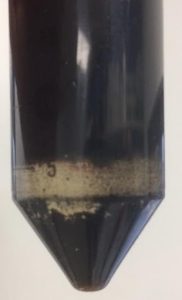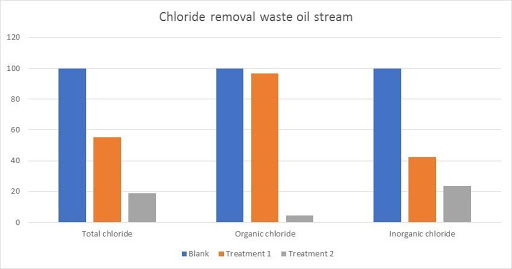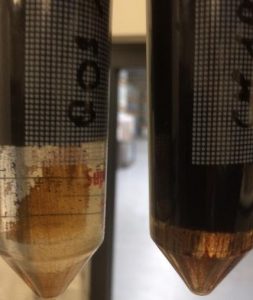To minimize pollution of the oceans and waterways, each ship must collect and discharge residues and oily mixtures generated during its ocean voyages into so-called port reception facilities, as indicated in the MARPOL 73/78 protocol. These PCR facilities will recycle and regenerate the waste oil into second-hand combustion fuels. WVT Industries offers these facilities the ideal ash reduction solutions for waste oil streams.
During this recycling process, the focus is on reducing the water and ash content in the waste oil. This is important because the oil is less attractive for use as fuel if the limit values for ash and organic chloride concentration are exceeded. WVT Industries responds to this with solutions that effectively reduce both the ash content and the organic chloride concentration.
Reuse of waste oils and lubricants
As crude oil and clean lubricants are becoming less and less available, efforts are being made to reuse waste oil and used lubricants as second-generation fuels.
During application, and especially after cleaning, oil and lubricants become contaminated with water, heavy metals and halogens. If left untreated, these contaminated streams will not only have a detrimental effect on the burner's service life, but will also lead to pollutants in the flue gas of the burner.
This is where WVT comes in. Instead of disposing of these streams as hazardous waste, they are treated to reduce both the water and ash content, and can be reused as combustion fuel.
As air quality regulations for the combustion of industrial fuel oil become stricter, the need for low ash and high quality fuel oils is increasing. This creates economic opportunities for bringing recycled oil to the market.
Practical tests
As the composition of different waste oil streams can vary, it is of the utmost importance to test for the most effective treatment that results in the lowest residual concentration for water, ash and halogens.
WVT Industries has not only developed a range of treatment products, but has also invested in laboratory solutions to vary both the use of products and treatment conditions.
Examples of test results of our ash reduction solutions
Example 1: TREATMENT OF SLOP OIL
The first example concerns waste oil from the maritime sector. Analysis carried out on the sample indicated elevated concentrations of ash and, in more detail, potassium, calcium, aluminium and silica.
The test results can be viewed as follows:


The test results indicate that a pure demulsifier (treatment 1) is insufficient for the reduction of the ash, but that a combination of an ash reduction aid and a demulsifier resulted in waste concentrations that are low enough to meet the restrictions for both the total ash and for the various metal components separately.
Example 2: TREATMENT OF WASTE OIL
In this sample, the total chloride concentration far exceeded the maximum permitted limit. The chlorides that are present in the burner's waste oil convert into hydrochloric acid, which has a highly corrosive impact on the installation.


The graph above shows that the first treatment has an effect on the inorganic chloride, but almost no effect on the organic chloride concentration. Another product (treatment 2) not only has a good effect on the organic chloride concentration, but the effects on the inorganic chlorides are even better than treatment 1. This results in a very good total chloride removal.
Available from WVT
At WVT Industries, we not only provide your ash reduction solutions but supply various demulsifiers, ash reduction agents and combination products. But we also provide support with laboratory testing and technical know-how so that together we can streamline the waste oil recycling process and achieve the lowest water and ash concentrations.


